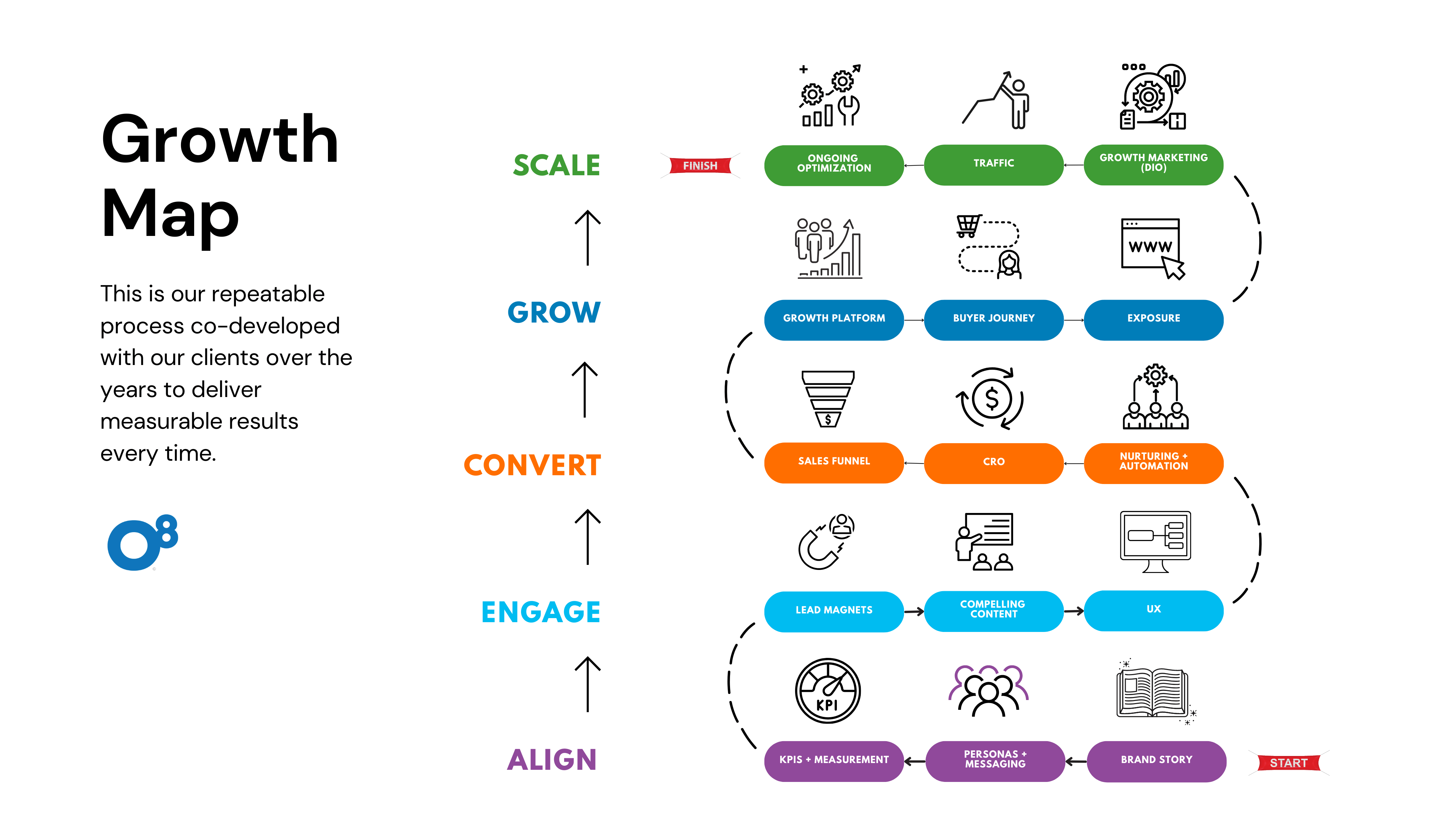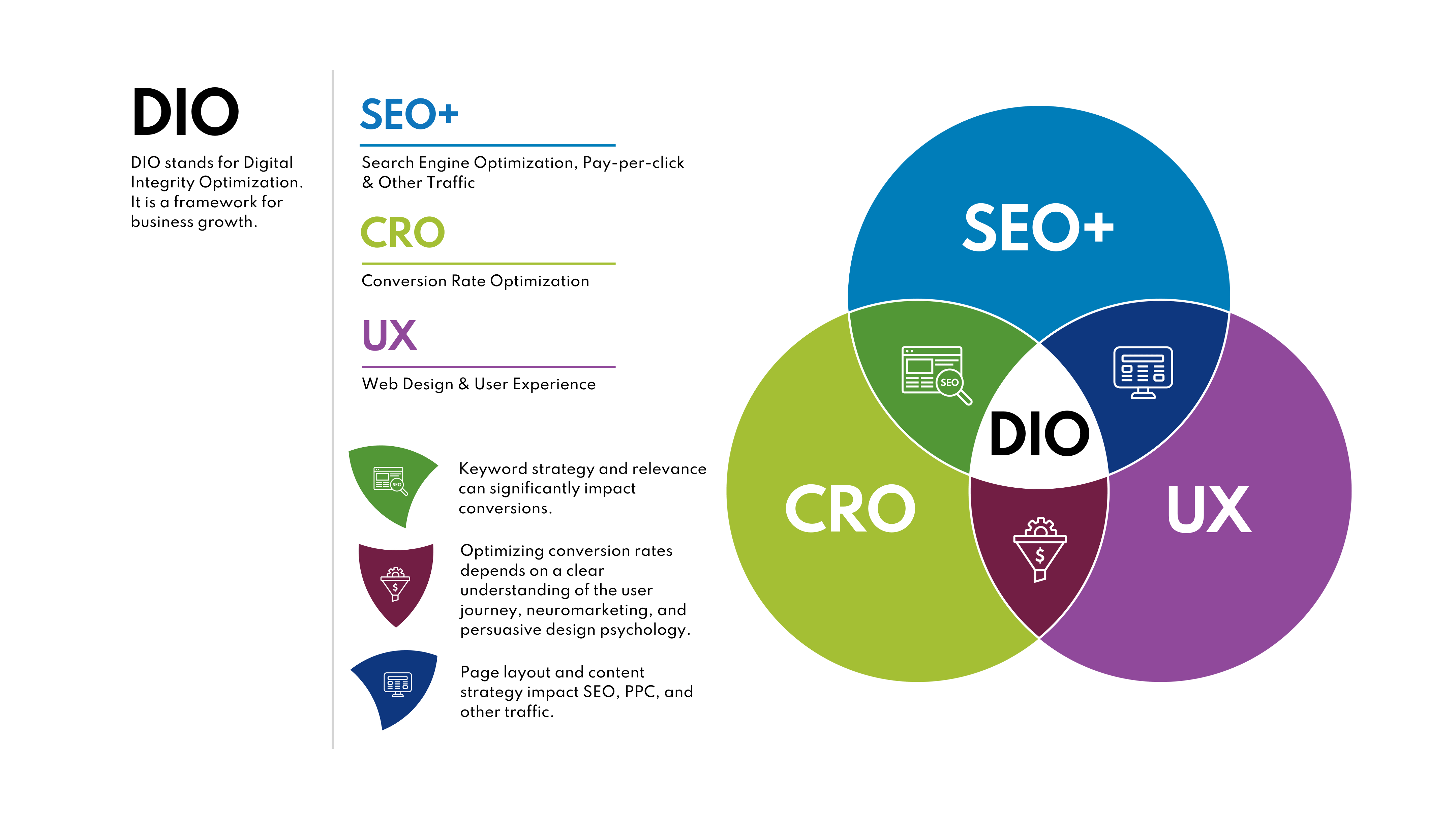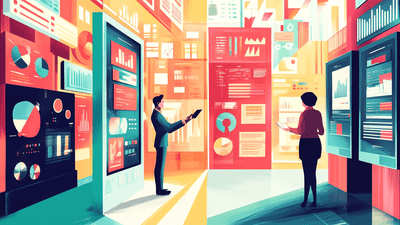Growth Marketing vs. Performance Marketing: What’s Best for Your Business?

- Growth marketing focuses on long-term, sustainable growth by nurturing customers throughout the funnel, using data, experimentation, and multi-channel strategies.
- Performance marketing delivers immediate, measurable results, primarily through paid advertising, with a strong focus on conversions and ROI.
- Growth marketing builds relationships and brand loyalty, while performance marketing drives quick wins and direct sales.
- The most effective digital marketing strategy combines both approaches, using performance marketing for immediate results and growth marketing for long-term success.
- Choosing the right balance depends on your business stage, goals, and resources.
Marketing is no longer just about the broad strokes of traditional marketing, such as running ads or chasing quick wins. To grow sustainably, brands rely on two key digital marketing strategies: growth marketing and performance marketing. Each plays a crucial role, but knowing when and how to use them can mean the difference between scaling efficiently and burning through your budget.
Let’s define growth marketing and performance marketing. Then, we’ll compare and contrast the two and explain how to use each approach in your online marketing strategy.
What Is Growth Marketing?
Growth marketing is a long-term strategy focused on sustainable, compounding growth. It goes beyond customer acquisition by nurturing users through every stage of the funnel, using data, experimentation, and insights.
Key Features & Benefits of Growth Marketing:
- Full-funnel focus – From awareness to retention
- Data-driven experimentation – A/B testing, personalization, and CRO
- Customer-centric – Prioritizes lifetime value over quick wins
- Multi-channel strategy – Content, SEO, email, social media, referrals
To better understand growth marketing, you need to first understand the marketing funnel. While a traditional marketing funnel was a static, linear model, but today's modern digital marketing strategies demand a flexible, data-driven approach that adapts as you go.
Unlike performance marketers who often chase quick wins, growth marketers look at the whole funnel. They optimize for every stage, from initial awareness to final conversion, whether it’s a streamlined conversion funnel or a complex B2B marketing funnel, seeking to build lasting relationships.
We have a comprehensive guide on growth marketing, so feel free to explore it for a deeper analysis.
What Does a Growth Marketer Do?
A growth marketer focuses on the full customer journey—not just getting clicks, but driving real business growth. They're data-driven, experiment constantly, and work across acquisition, activation, retention, and referral to build their growth marketing strategy.
By combining product marketing, and data analysis, growth marketers create scalable, repeatable processes that fuel long-term success.
The term 'growth marketer' is often used as an umbrella term, encompassing roles such as growth marketing manager, growth marketing specialist, product marketer, and even data analyst, depending on the growth marketing agency's structure and the specific responsibilities involved.
What Does a Growth Marketing Specialist Do?
A growth marketing specialist searches every nook and cranny of a business for growth opportunities. They’re constantly looking for ways to attract, engage, and keep customers around for the long haul. Using a mix of data, creativity, and experimentation, they run campaigns that not only bring in new customers but keep them coming back.
Growth marketing managers don't just think about hitting numbers — they think about scaling smart and making sure every effort is working towards sustainable growth, often incorporating elements of growth hacking to find rapid, impactful results. It’s a balance of big-picture strategy and hands-on testing to find what truly moves the needle.
Product Marketing's Role in Growth
Product marketing also plays a vital role in driving growth by aligning product development with market needs. A product marketer, or product marketing manager, acts as the bridge between product management and the broader marketing team. They collaborate closely with product managers to understand the product roadmap, translate technical features into compelling customer benefits, and develop go-to-market strategies.
Through market research and competitive analysis, they make sure that the value proposition of the product is clearly articulated in the marketing strategy, and that's the right angle that will resonate with the target audience. Two main goals here are driving adoption and retention.
Close collaboration between product marketing and product management is what makes sustainable growth possible. When both sides are in sync, the product is positioned to actually solve customer problems and support the business’s bigger goals.
What is Growth Hacking?
Growth hacking is an experimentation-driven approach to marketing, where a growth hacker focuses on quickly identifying and implementing strategies that accelerate growth. Often, growth hackers seek a single, impactful "growth hack" that can drive significant user acquisition or engagement. Unlike traditional marketing, growth hacking prioritize speed and efficiency, leveraging data and technology to find scalable solutions with minimal resources.
What Is Performance Marketing?
Performance marketing is all about measurable, immediate results. It’s often associated with paid advertising, where brands only pay for actions like clicks, conversions, or sales.
Key Features of Performance Marketing:
- Conversion-focused – Primarily aims at direct sales or lead generation
- ROI-driven – Every campaign is measured by cost-per-click (CPC), cost-per-acquisition (CPA), or return on ad spend (ROAS)
- Short-term wins – Great for quick revenue but less sustainable alone
- Highly trackable – Uses analytics, tracking pixels, and UTM parameters
What Does a Performance Marketing Manager Do?
A performance marketing manager drives the marketing team's commercial performance. Performance marketers plan and execute campaigns to meet their Key Performance Indicators (KPIs). In addition, this marketing leader tests new performance marketing channels and trends to improve ROI. They also allocate and optimize budgets to maximize cost per acquisition (CPA) and scale new customers.
Focused on immediate results?
Discover how performance marketing boosts your paid search, social, and display ads for rapid growth.
Growth Marketing vs. Performance Marketing
Both growth marketing and performance marketing use data and analytics to drive results, set goals, and track efforts. They also rely on continuous testing to optimize strategies. However, there are several key differences.
What’s the Difference Between Growth Marketing and Performance Marketing?
Growth marketing focuses on the entire funnel, while performance marketing only involves the bottom of the funnel.
With growth marketing, you target prospects in each stage of the funnel. In performance marketing, you zero in on people who are most likely ready to take action, like filling out a form or making a purchase.
Growth marketing campaigns build long-term business growth by forming customer relationships. Performance marketing is a short-term strategy to convert new customers quickly.
In growth marketing, you rely on a broader range of marketing channels, such as content marketing, social media marketing, and email marketing. With performance marketing, the focus is more on paid platforms, like Google Ads, Facebook Ads, and LinkedIn Ads.
Paid marketing is a cornerstone of performance marketing, designed to drive immediate, measurable results. Paid advertising strategy forms a crucial component of many marketing plans, with platforms like Google Ad and paid social media ads driving targeted traffic.
A performance marketer frequently employs PPC ads and display ads to achieve immediate results, while a growth marketer may leverage these, alongside emerging channels like Pinterest Ads, TikTok ads, as part of a broader, long-term acquisition strategy.
Ultimately, whether it's a simple paid advertisement or a complex multi-channel campaign, the goal is to drive measurable value.
| Feature | Growth Marketing | Performance Marketing |
|---|---|---|
| Goal | Sustainable, long-term growth | Immediate conversions |
| Approach | Experimentation, full-funnel | Paid ads, direct response |
| Timeframe | Long-term | Short-term |
| Channels | Organic (SEO, content, email, referrals) | Paid (PPC, display, social ads) |
| Metrics | Customer LTV, engagement, retention | ROAS, CPA, CTR |
How Growth Marketing and Performance Marketing Work Together in Digital Marketing
How Does Growth Marketing Work?
Since growth marketing tackles all stages of the funnel—from awareness to retention—it ensures a holistic, sustainable approach to scaling a business.
At O8, we use a repeatable process and roadmap in our growth marketing services. We employ various tactics to align, engage, convert, grow, and scale your business.
This starts with in-depth market research to understand your audience and tailor each marketing effort to specific marketing objectives.
In B2B marketing especially, success depends on building long-term relationships and navigating complex sales cycles—ensuring every touchpoint supports your overall growth strategy.

Learn more about our growth marketing framework
When your brand is ready to scale, we initiate Digital Integrity Optimization (DIO™️). This framework—which includes CRO, web design, UX, search engine optimization (SEO), pay-per-click (PPC), and other traffic—prioritizes problems and opportunities by business impact. It’s this ongoing optimization that continues to increase your ROI.

For example, at O8, we worked with R3 Continuum using agile 2-week sprints. This allowed us to implement targeted paid ads alongside technical and on-page SEO, as well as UX enhancements. As a result, our full-funnel strategy drove a 150% increase in inbound traffic, generated 4x more leads year-over-year, and secured 500 new leads in just 90 days.
How Does Performance Marketing Work?
Performance marketing leverages paid media to drive measurable results. Key channels include social media advertising, search engine marketing (SEM), influencer partnerships, and sponsored content.
Other common performance marketing types include affiliate marketing, email marketing, and display advertising.
Performance marketers test different channels to verify which ones yield the best results depending on the brand, and potential customer segments. By reallocating more media budgets to high-return channels and using a test-and-learn approach to optimize demand generation campaigns, marketers can boost their marketing ROI by 15-20% percent. This is particularly crucial for B2B marketers, who must meticulously analyze lead quality and sales pipeline progression alongside traditional metrics like click-through rates and conversion rates.
What is demand generation marketing?
Demand generation, sometimes called demand gen, focuses on creating brand awareness, interest, as well as driving qualified leads by providing valuable content to a specific audience. It's a strategic process that nurtures potential customers through their buying journey, often implemented through a structured demand generation campaign designed to move prospects through the funnel.
On the other hand, B2B demand generation often involves complex campaigns using content marketing strategy and targeted outreach to build relationships with decision-makers. Ultimately, effective demand generation aims to establish trust and solve problems, fostering long-term engagement.
To effectively execute these demand generation strategies, performance marketers leverage a range of specific tools and channels, including the following:
- Social Media Advertising
Social media advertising uses platforms like Facebook, Twitter, and Instagram to promote products and services. Ads may be in the form of sponsored posts, display ads, or video ads. You target certain users based on their interests, demographics, and behaviors.
- Search Engine Marketing (SEM)
Search engine marketing (SEM) is a performance marketing channel that involves promoting websites and online content through search engines, such as Google and Bing. You create campaigns with specific keywords and bid on those terms. Then, your ads appear during searches.
- Influencer Marketing
Influencer marketing is a valuable strategy for brand marketing, as it allows you to connect with your target audience through authentic endorsements from trusted influencers. Through this markting tactic, your brand partners with people who have a large online following. It’s particularly effective for reaching younger generations who may distrust traditional advertising. Forms include sponsored posts, product placements, and sponsored events or campaigns.
- Sponsored Content
With sponsored content, you pay to have your message featured on a website or platform. It blends in with other content, so it’s more subtle and less disruptive. Forms include articles, videos, podcasts, and social media posts.
Growth Marketing vs. Performance Marketing: Case Studies
Let's explore how leading brands leverage distinct marketing strategies to drive results.
Growth Marketing Examples
Slack
Starting with just 15,000 free users in 2014, Slack invited organizations to experiment with its beta platform. Over the next six months, developers gathered feedback and refined the product, leading to over three million paid users today. This iterative, user-centric growth marketing approach that didn't push for conversion just try-outs not only enhanced the product experience but also fostered long-term customer retention.
Zoom
Zoom transformed from a modest video conferencing tool, founded in 2011, into a household name during the pandemic. By establishing a growth loop—where users could easily invite anyone with an email address—Zoom encouraged widespread trials and gradual conversion to paid subscriptions. Today, it boasts more than a half million business customers, proving that strategic, network-driven growth can scale a product rapidly.
Performance Marketing Examples
GRAVIS
GRAVIS, Europe’s leading Apple service provider, utilized local inventory ads (LIA) to connect online shoppers with its brick-and-mortar stores. By integrating location targeting and ad scheduling into its existing product listing ads framework, GRAVIS boosted click-through rates by 81% on desktop and 99% on mobile. This performance marketing campaign not only increased in-store visits but also underscored the brand’s commitment to a seamless online-to-offline experience.
Lenovo
As the world’s top PC manufacturer, Lenovo sought a clearer understanding of its marketing efficacy. The goal was to test data-driven attribution approaches and see which model was the best for them. They found out comparison shopping engines (CSEs) have about 42% better ROAS than the next-best channel —allowing Lenovo to optimize its budget allocation and drive incremental sales.
Benefits Comparison: Growth Marketing vs. Performance Marketing
| Benefit | Growth Marketing | Performance Marketing |
|---|---|---|
| Efficiency | Optimizes strategies in real time using data | Drives specific actions with a focus on ROI |
| Focus | Targets effective channels for sustainable, long-term growth | Concentrates on immediate, measurable outcomes (e.g., clicks, sales) |
| Data-Driven Decisions | Leverages deep analytics and experimentation to refine strategies | Utilizes clear metrics like CTR and CPA for quick adjustments |
| Long-Term Results | Builds lasting foundations and customer relationships | Prioritizes short-term wins and rapid conversions |
| Cost-Effectiveness | Maximizes value over time through continuous optimization | Ensures spending is tied directly to successful actions |
| Customer Experience | Enhances the overall user journey from acquisition to retention | Delivers targeted, relevant messaging that prompts immediate action |
When to Use Growth Marketing or Performance Marketing?
Performance marketing can play a role in growth marketing’s holistic strategies to digital marketing. Depending on your business status and objectives, you may focus more on one method than the other.
For example, if you’re trying to build a customer base and keep that audience coming back, you should put your efforts into growth marketing campaigns. However planning performance marketing campaigns makes more sense if you're an established brand that needs to hit certain KPIs and sales quotas for the month.
Overall, growth marketing and performance marketing work together in digital marketing to cover every stage of the buyer’s journey. Growth marketing builds awareness, attracts potential customers, and keeps customers happy. Performance marketing is an extra nudge that marketers can use when they need to convert prospects into customers quickly.
Growth Marketing or Performance Marketing: Which Way Forward?
Looking ahead, growth marketing is increasingly focused on more than just attracting new customers—it's about building lasting relationships and fostering brand loyalty.
If you're lacking proper positioning, performance marketing won't get you there. On the other hand, as competition intensifies, performance marketers must refine targeting and adopt more machine learning-driven methods. This shift toward data-backed campaigns ensures more precise results, maximizes ad spend efficiency, and gives businesses a faster path to scale.
Each approach has its own strengths, but the best strategy depends on your unique business goals.
Ultimately, you don’t have to choose between growth marketing and performance marketing. There’s room for both approaches in your digital strategy. O8 offers growth marketing services and performance marketing tactics to grow and scale your business.
Growth & Performance Marketing, Combined
Whether you need sustained growth or rapid results, we’ll build a strategy that delivers. Talk to an expert at O8 to find the right approach for you.








